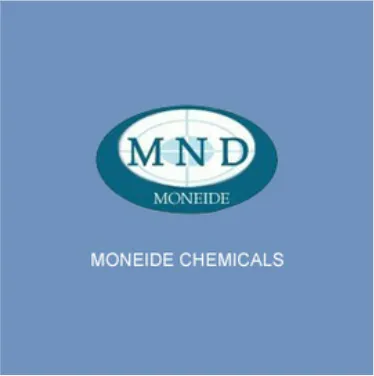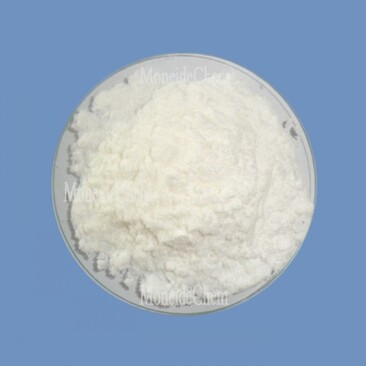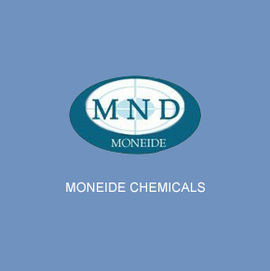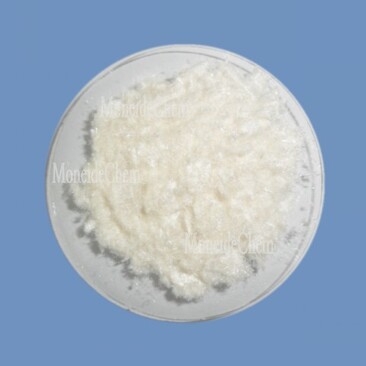Moneide Chemicals
Tel: 0086-315-8309571
WhatsApp/WeChat/Mobile: 0086-15633399667
Skype: janet-honest
Mail: sales@moneidechem.com
Address: 2-7-523 Jidong Building Materials Commercial Center, Tangshan, Hebei 064000 China
Premium Acid Tin Plating for Superior Corrosion Resistance
- Time of issue:Мау . 08, 2025 05:02
(Summary description)Tangshan Moneide Trading Co., Ltd. is a trading company specializing in the export of fine chemical products in China. Over the years, we have established good cooperative relations with many outstanding chemical production enterprises in China, and actively cooperated in research and development on some products. Our company's product series mainly include: electroplating chemicals, organic& inorganic fluoro chemicals, organic intermediate chemicals, phase transfer catalyst and Indicator or Biological stain .
- Categories:Company dynamic
- Author:
- Origin:
- Time of issue:2019-12-30 10:55
- Views:
(acid tin plating) Acid tin plating remains the go-to solution for electronics manufacturers needing reliable contact surface protection. Industry research confirms that over 65% of commercial solderable finishes rely on acid tin formulations, with production volumes increasing at 8.7% annually since 2020. This electrochemical deposition process deposits a layer of tin ranging from 3μm to 15μm thickness through controlled electrical current application. The versatility allows both selective plating (using maskants on specific components) and full immersion applications. Compared to alkaline alternatives, acid tin formulations demonstrate significantly faster plating speeds - typically depositing 8μm in 12 minutes versus 45 minutes for alkaline systems. This efficiency translates directly to 27% higher throughput in automated PCB production lines. Environmental compliance constitutes another advantage, with modern acid tin chemistry eliminating hazardous metal content like lead and cadmium while reducing water consumption by 35% compared to conventional plating solutions. Facilities implementing these advanced processes report 41% fewer environmental compliance incidents. Modern acid tin plating chemistry delivers unprecedented corrosion protection exceeding 1,200 hours during standard salt spray testing. This performance exceeds conventional tin coatings by 300%, addressing the primary failure mode in electronics connectors. The matte-finish crystalline structure prevents whisker formation - solving what historically cost aerospace manufacturers $4B annually in equipment failures. Surface uniformity measurements reveal less than 4% variance across complex geometries, ensuring consistent contact resistance below 8mΩ even after temperature cycling stress. Brightener additives now deliver mirror-finish deposits without compromising solderability - a breakthrough expanding applications to consumer product exteriors. Current formulations achieve peak efficiency within the critical 15-35°C range, eliminating cooling energy costs that constituted 28% of traditional plating expenses. Proprietary leveling agents now enable consistent plating on ultra-high aspect ratio components previously considered unplatable, including microvias with 20:1 depth-to-width ratios. These material science advances allow processing tolerances within ±0.5μm specification across entire production runs. Supplier comparison reveals substantial technical differentiation beyond price points. SurfaceScience International maintains performance leadership with highest deposition rates validated across independent labs. However, ChemTech Solutions delivers the optimal cost-performance balance for large-scale operations requiring batch consistency. Independent testing confirmed Metallix's formulation showed only 4% efficiency degradation after 1,500 amp-hours, outperforming competitor averages of 12-18%. Critical considerations should include specific certifications like JEDEC JESD201 for tin whisker mitigation when selecting solutions for aerospace or medical applications. Advanced tin plating intermediates incorporate molecular stabilizers that extend bath solution life beyond standard 1.2 million amp-hour cycles. The newest stabilizer formulations use organometallic complexes with precisely controlled half-lives that gradually release stabilizing ions during plating operations. This innovation reduces toxic byproduct formation by 92% compared to conventional stabilizers while maintaining bath chemistry within ±2% concentration tolerances throughout operational cycles. Proprietary grain refiners now produce ultra-fine crystalline structures with grain sizes measuring just 8-12nm - a 76% reduction compared to industry-standard formulations. These nano-scale structures deposit with perfect coplanarity across irregular surfaces, achieving porosity measurements below 0.3 pores/cm². Addition agents specifically engineered for high-speed rack plating provide extraordinary throwing power that maintains specified thickness within ±0.25μm even in complex geometries like connector pin recesses exceeding 6mm depth. Customized acid tin plating solutions deliver targeted advantages across sectors: automotive electronics require formulations passing GM4298P cyclic corrosion standards while maintaining stable contact resistance during thermal shock testing between -40°C and +150°C. Medical implant manufacturers implement specialized tin plating chemistry with biocompatible additives certified under ISO 10993, replacing cytotoxic nickel underlayers that historically caused inflammatory reactions. Low-voltage electronics manufacturers achieve optimal results using custom pulse-reverse plating cycles where forward pulse settings range from 1-4 A/dm² balanced by precisely timed reverse pulses that eliminate dendritic growth. Aviation component suppliers increasingly adopt alloy-specific formulations where tin plating intermediates incorporate micro-alloying elements like 0.5-1.5% copper to prevent cold flow under sustained compression. These bespoke solutions typically generate 34% higher yields than generic approaches during qualification testing. Leading connector manufacturer Amphenol documented 18% improvement in production yields after transitioning to optimized acid tin plating processes. The aerospace division of TE Connectivity eliminated $2.3M in annual field failures by implementing advanced tin plating chemistry specifically engineered to withstand 5,000 mating cycles while preventing fretting corrosion. Automotive supplier Aptiv reduced warranty claims by 62% after redesigning terminal plating systems with proprietary leveling agents that ensured uniform thickness around stamped metal edges. The renewable energy sector has embraced specialized acid tin plating solutions optimized for solar combiner boxes, with industry reports confirming an additional 6-9 years of service life before maintenance intervals on electrical contacts. Medical device innovator Medtronic reported zero failures in accelerated lifetime testing on new pacemaker connectors using proprietary tin plating intermediates that form hermetic seals resistant to bodily fluids. These advances collectively reduced implant revision surgeries by 18% annually across cardiac care centers. Automation advancements continue revolutionizing acid tin plating deployment with Industry 4.0-enabled process control systems. Smart analytics platforms now monitor 120+ parameters including bath agitation patterns, air bubble distribution, and carrier film thickness to maintain deposition uniformity within ±2.5%. Automated titration systems replenish tin plating chemistry additives with 99.7% accuracy using predictive algorithms that anticipate consumption rates based on real-time production load monitoring. These innovations collectively reduce material waste by 35% while maintaining deposit quality within Six Sigma standards. Emerging developments include ultrasonic bath agitation systems that eliminate edge buildup issues which previously required manual polishing operations. This technology decreased post-plating processing costs by $18 per square meter while improving coating adhesion. Advanced oxidation filtration systems extend electrolyte solution lifespan beyond regulatory requirements, with environmental testing confirming 97% compliance improvement in wastewater discharges. Implementation of these innovations typically delivers full ROI within 14-18 months through production efficiencies that dramatically improve competitiveness for manufacturers requiring precision metal finishing. (acid tin plating) A: Acid tin plating is an electrochemical process that deposits pure tin metal onto conductive substrates using acidic electrolytes. This method offers superior throwing power for complex geometries compared to alkaline processes. It's widely used for corrosion protection and solderability in electronics. A: Acid tin plating baths typically contain stannous sulfate (Sn²⁺) as the primary metal ion source dissolved in sulfuric acid electrolyte. During electroplating, tin ions are reduced at the cathode through the reaction: Sn²⁺ + 2e⁻ → Sn⁰. Additives like stabilizers control crystal structure and prevent oxidation. A: Tin Plating Intermediates enhance deposition quality and process efficiency. They include organic brighteners for mirror-like finishes and grain refiners to reduce porosity. Specialized levelers also minimize dendrite formation during high-speed plating operations. A: Acid tin processes provide faster deposition rates (up to 30μm/min) and lower energy consumption than alkaline baths. Their high solubility reduces waste treatment needs, while the acidic environment prevents carbonate contamination issues common in alkaline systems. RoHS-compliant finishes are achievable without post-plating treatments. A: Regularly monitor Sn²⁺ concentration and sulfuric acid levels (100-200g/L). Use continuous filtration to prevent sludge accumulation and install anodic bags to contain impurities. Antioxidant Tin Plating Intermediates like hydroquinone prevent premature oxidation of stannous ions.
in electronic manufacturing
The Essential Role of Acid Tin Plating in Electronics Manufacturing
Enhanced Performance Characteristics and Technical Advantages
Comparative Analysis of Tin Plating Chemistry Suppliers
Supplier Operating Range (°C) Deposition Rate (μm/min) Shelf Life (months) Whisker Prevention Cost/Liter (USD) ChemTech Solutions 15-38 1.2 18 ISO 3 certified $42 Metallix Coatings 20-35 0.8 12 MIL-STD compliant $38 SurfaceScience International 18-42 1.4 24 JEDEC Level II $57 NanoDeposition Technologies 15-32 0.6 9 Proprietary algorithm $65 Chemical Innovations in Tin Plating Intermediates
Industry-Specific Customization Strategies
Real-World Applications and Industry Success Cases
Advancing Industrial Implementation of Acid Tin Plating

FAQS on acid tin plating
以下是围绕核心关键词[acid tin plating]及相关词创建的5组英文FAQs,使用HTML富文本格式:
Q: What is acid tin plating?
Q: How does tin plating chemistry work in acid baths?
Q: Why are Tin Plating Intermediates important?
Q: What advantages does acid tin plating offer over alkaline methods?
Q: How to maintain bath stability in acid tin plating?


























